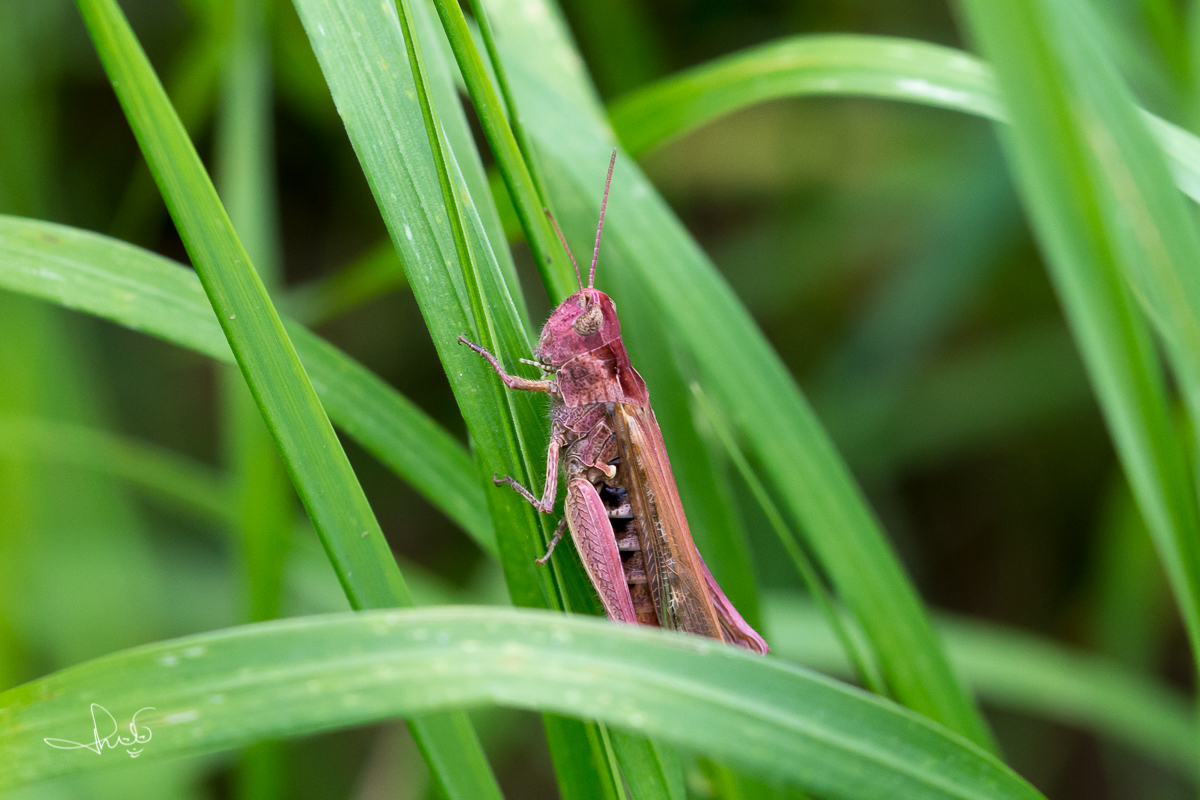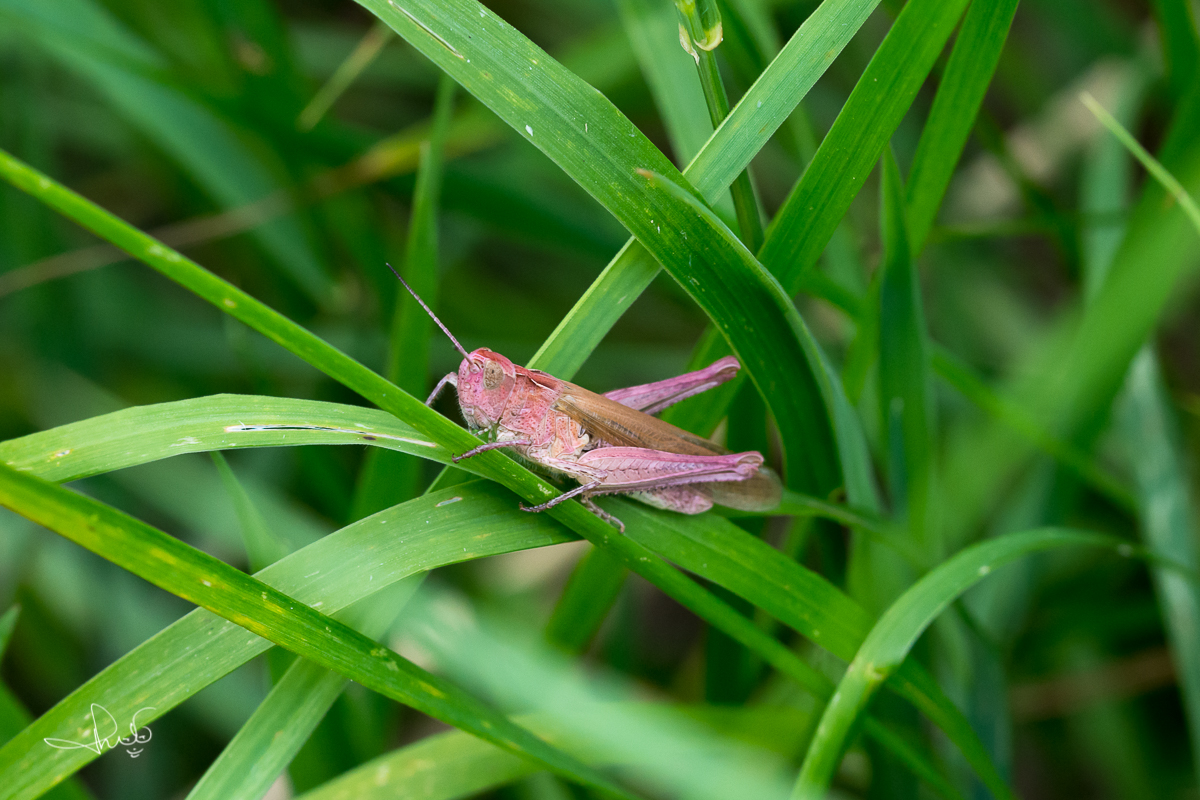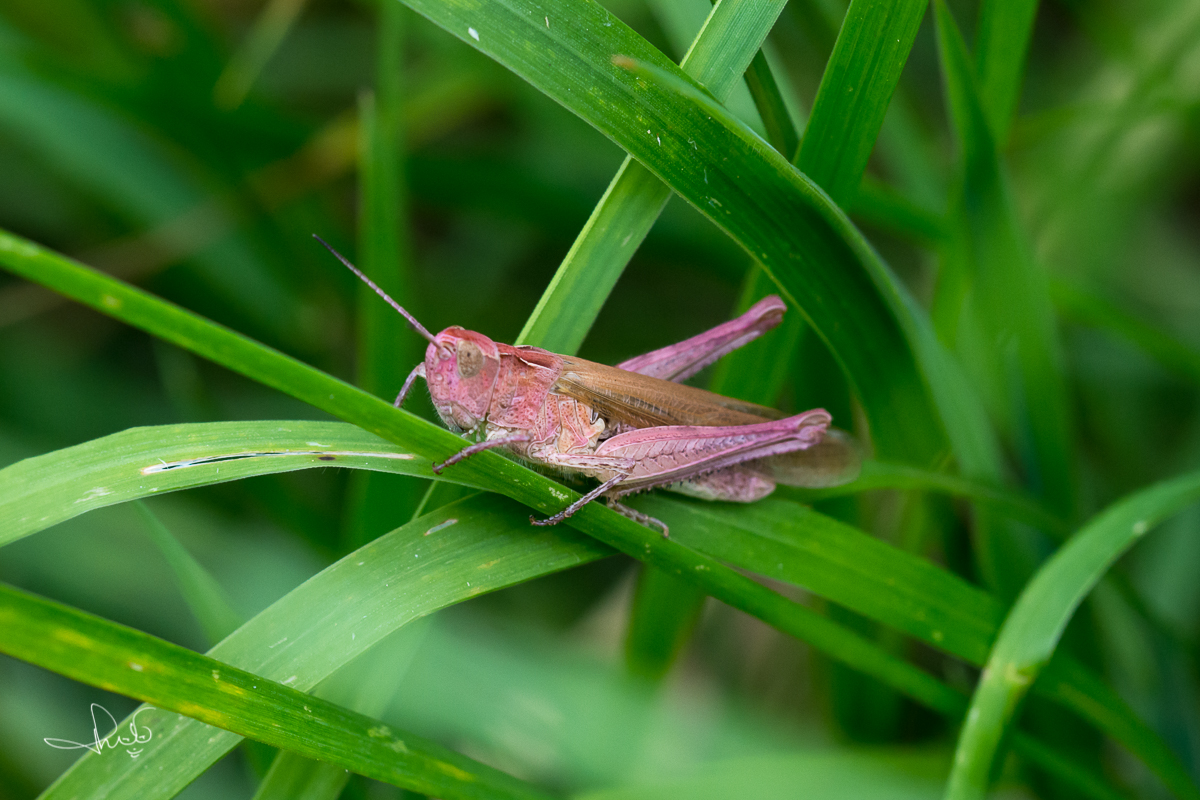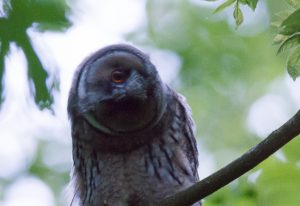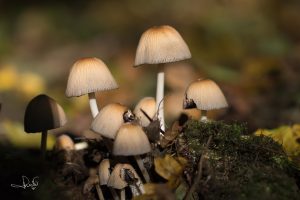Last week I was strolling along the canal in my hometown, looking for butterflies, wasp spiders, bees and other insects. Countless grasshoppers jumped around as I slowly walked through the tall grass. Suddenly I noticed a very different colour in the grass. There was a pink one among the green and brown grasshoppers. Not one, but two! Quickly photographed one and before I knew it they had both disappeared into the tall grass.
Erythrism
Colour abberations are more common in the animal world. I will discuss this further below. But first those pink grasshoppers. This form of colour deviation is called erythrism. This discolouration can have two causes. Firstly, by eating food with a high content of the pigment astaxanthin. This is produced by algae and single-celled organisms, which are eaten by small lobsters and shrimps. This gives them a pink colour. These little creatures are then consumed in large numbers by, among others, flamingos, giving these birds their typical pink colour. Flamingos that do not engulf this astaxanthin are white in colour.
Genetic disorder
The second cause is a genetic defect that causes red pigment to prevail in skin, fur or feathers. This abberation is not so common, but there are pictures of foxes and polecats with a pink fur, among other animals. With the grasshoppers there is a total or partial lack of the green or brown pigment and therefore they get a pink colour. Although pink grasshoppers are not seen that often, they are more common than we think. But because of their colour the animals are so striking and vulnerable that many are spotted and eaten by their natural enemies. And so fewer are left and that’s why they are labelled as fairly rare.
Albinism
In addition to erythrism, several colour deviations are possible in the animal world. The best known is albinism, which we can also witness in people. With albinism, no melanin is produced by the body, which ensures the colour of the skin and eyes. With albinism, the skin is very light in colour and the eyes are red. You probably know the albino rabbits with their pure white fur and red eyes. Or the gorilla Snowflake in Barcelona zoo. People and animals with albinism are extremely sensitive to sunlight. And they also often have additional eye disorders. For some indigenous tribes in Africa, magical powers are attributed to albinos. Not always in a positive sense, which means that they often have to pay for their unusual skin colour with death.
Leucism
A less far-reaching form of colour aberration is leucism. This looks like albinism, because parts of skin, fur or feathers have a white colour. Yet there is a difference, because leucism lacks all types of skin pigment and not just the melanin. Leucism is also more patchy, so it doesn’t concern the whole animal, but parts of it. Animals with leucism therefore have a normal eye colour and are not sensitive to sunlight. Perhaps you have seen photos of blackbirds or crows with white spots. Unlike albino animals, leucistic animals are well able to survive. It is known that leucistic animals behave more aggressively towards their peers, perhaps as a survival strategy.
Melanism
Another abberation is melanism. In addition, the animal has an excess of the dark pigment melanin. It is a disorder that occurs less frequently than albinism and where the animal is completely black. Now, for example, a black crow and blackbird are also black, but that’s not a form of melanism. The colour black is after all specific to these species. The very rare black panther is a melanistic animal. This is actually a melanistic colour variant of a member of the Panthera genus and not a separate species. In Asia and Africa black panthers are in fact leopards (Panthera pardus) an in the Americas they are jaguars (Panthera onca).
Common field grasshopper
Pink grasshoppers are therefore not a separate species and the phenomenon can occur with different species. The grasshopper that I photographed is probably a so-called common field grasshopper (Chorthippus brunneus), not a rare species but very common throughout Europe. It was nice to see such a pink animal, because you don’t see them that often.
Sources:
This post was originally published in Dutch on August 4th 2019



